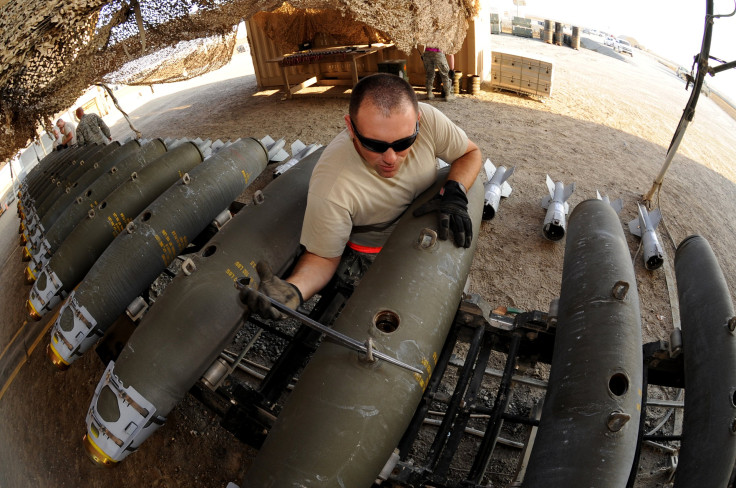US Air Force Drops Record Amount Of Bombs Against Islamic State In Iraq And Syria

The United States Air Force has increased the level of its attacks on the Islamic State group in recent weeks, dropping more munitions than ever before. The increase, mentioned in an article on the service’s website, means that more than 60 percent of all airstrikes carried out by coalition forces are now the work of the U.S. Air Force. The remaining 40 percent of bombs are dropped on ISIS by the U.S. Navy, U.S. Marine Corps and coalition partners.
Since the beginning of October, more than 500 GBU-38 and GBU-54 precision-guided munitions have fallen on Islamic State targets. According to the U.S. Air Force, that represents a 40 percent to 50 percent increase in the amount of bombs being dropped on ISIS targets.
"[Prior to being deployed] I had no idea how high-tempo the mission was going to be or how many munitions we would be building," a senior airman mentioned in the U.S. Air Force article said, adding, "In the last three months, we have already built over nine times the amount of munitions than the last rotation did in their entire six [months]."
Airstrikes, first launched in August 2014, were aimed at pushing back the Islamic State group’s advances in Iraq and Syria while also helping local forces regain lost territory. According to the Pentagon, over 3,220 targets have been hit so far.
According to defense publication Jane’s, the reason for the increase in munitions used is that ISIS (also known as ISIL) has changed tactics, and now aiplanes need to hit more, smaller targets.
Islamic State fighters learned how to change their tactics to avoid being hit by the high-precision weaponry (the GBU-38 is guided by GPS, while the GBU-54 by a laser beam). Accordingly, they began travelling in smaller groups so they could not be spotted from the air. In response, the U.S. Air Force has concentrated on areas of intense fighting and individual vehicles. That means the air force is having to rely increasingly on intelligence from sources on the ground and is expending a greater number of munitions than before.
© Copyright IBTimes 2025. All rights reserved.





















